Abstract
The aim of this work is to verify the self-quality assurances in medical institutions in Korea through the external audits by the group of experts and have a mutual discussion of the systematic problems. In order to validate the external audits 30 of 80 medical institutions across the nation were picked out considering the regional distribution and the final 25 institutions applied voluntarily to take part in this work. The basic rules were setup that any information of the participants be kept secrete and the measurements be performed with the dosimetry system already verified through intercomparision. The outputs for 2 or more photon beams, the accuracy of gantry rotation and collimator rotation and the poistional accuracy of MLC movement were measured. The findings for the output measurement showed the differences of −0.8%∼4.5%, −0.79%∼3.01%, and −0.7%∼0.07% with respect to that of the verified dosimetry system for the 6MV, 10MV, and 15MV, respectively. For the reference absorbed dose 8 (16%) of 50 photon beams in 25 medical institutions differed 2.0% or greater from the reference value. The coincidences of Field size with x-ray beam and radiation isocenters of Gantry roration and collimator rotation gave the results of within ±2 mm for every institute except 2 institutions. The positional accuracy of MLC movement agreed to within ±1 mm for every institute. For the beam qualities of 6 MV photon beams kQ values showed the distribution within 0.4% between maximum and minimum. For the protocols 21 institutions (84%) used absorbed dose to water based protocol while 4 insitutions (16%) used air kerma based one. 22 institutions employed the SSD technique while 3 institutions did the SAD one. External audit plays an important role in discovering the systematic problems of self-performing Quality Assurances and having in depth discussion for mutual complementation. Training experts of international level as well as national support system are required so that both the group of experts of medical physicists and government laboratory could perform together periodical and constant external audits.
REFERENCES
1. Khan FM. The Physics of Radiation Therapy. 3rd ed. Williams & Wilkins, Philadelphia. MD;2003. ), pp.p. 481–506.
2. Ezzell GA, Galvin JM, Low D, et al. Guidance document on delivery, treatment planning, and clinical implementation of IMRT: report of the IMRT Subcommittee of the AAPM Radiation Therapy Committee. Med Phys. 30(8):2089–2115. 2003.

3. Malhotra HK, Raina S, Avadhani JS, et al. Technical and dosimetric considerations in IMRT treatment planning for large target volumes. J Appl Clin Med Phys. 6(4):77–87. 2005.

4. Kataria t. Rawat S, Sinha SN, et al. Intensity modulated radiotherapy in abdominal malignancies: our experience in reductiong the dose to normal structures as compared to the gross tumor. J Cancer Res Ther. 2(4):161–165. 2006.
5. Cung JB, Kim JS, Ha SW, et al. Statistical analysis of IMRT dosimetry quality assurance measurements for local delivery guideline. Radiat Oncol. 6:1–8. 2011.

6. Moran JM, Dempsey M, Eisbruch A, et al. Safety considerations for IMRT: Executive summary. Pract Radiat Oncol. 1:190–195. 2011.

7. Klein EE, Hanley J, Bayouth J, et al. AAPM Report 142: Quality assurance of medical accelerators. Med Phys. 36:4197–4212. 2009.
8. AAPM Report 72. Basic application of multileaf collimators. American Association of Medical Physicists in Medicine, USA. 2001.
9. Bayouth JE, Wendt D, Morrill SM. MLC quality assurance techniques for IMRT applications. Med Phys. 30(5):743–750. 2003.

10. Losasso T. IMRT delivery performance with a varian multileaf collimator. Int J Radiat Oncol Phys. 70(1):S85–88. 2008.

Fig. 2.
Star patterns to determine radiation isocenter of (a) gantry rotation and (b) collimator rotation. These angles are 0o, 30o, 90o, 135o, 225o, 300o.
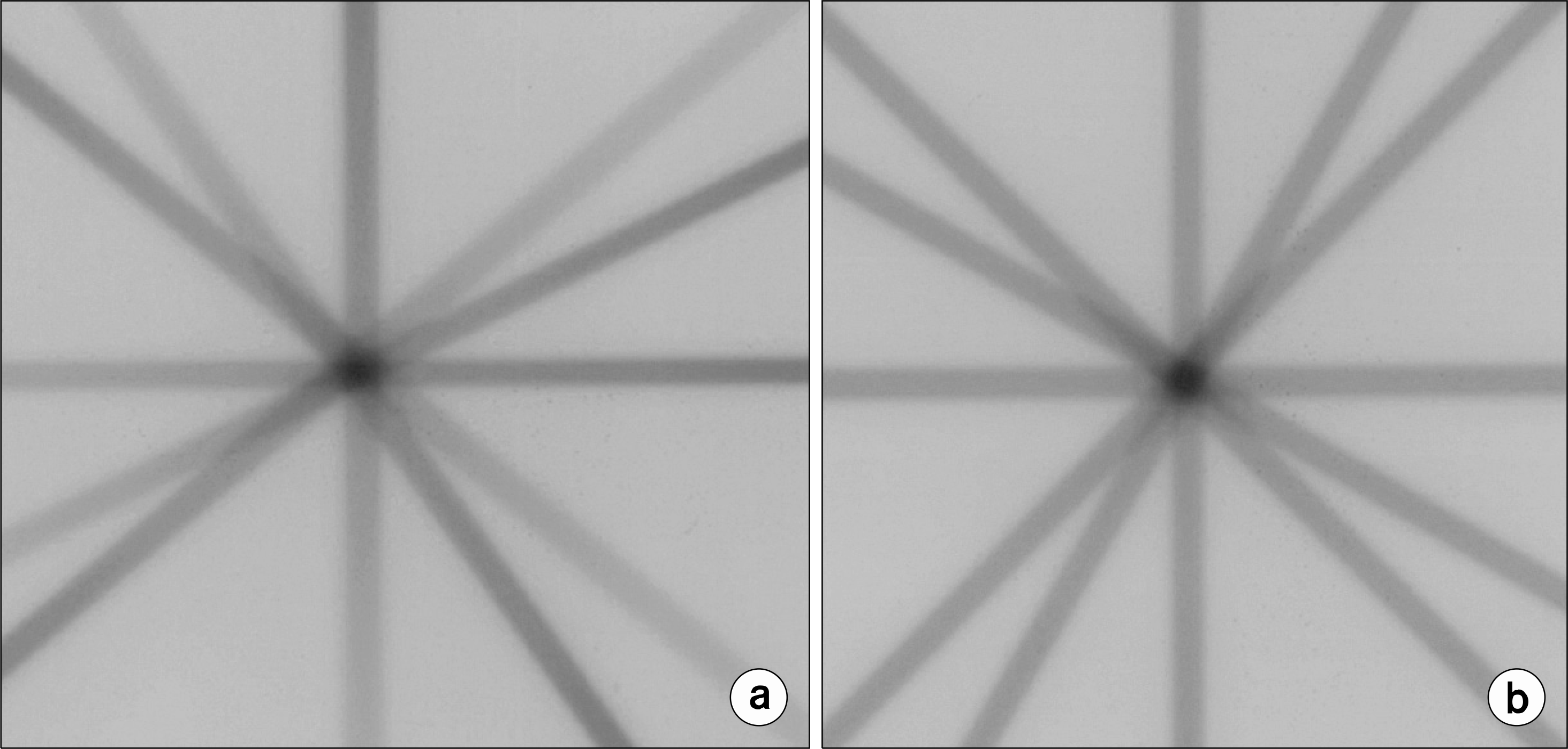
Fig. 5.
Distribution of radiation isocenters of gantry rotation and collimator rotation in 25 hospitals.
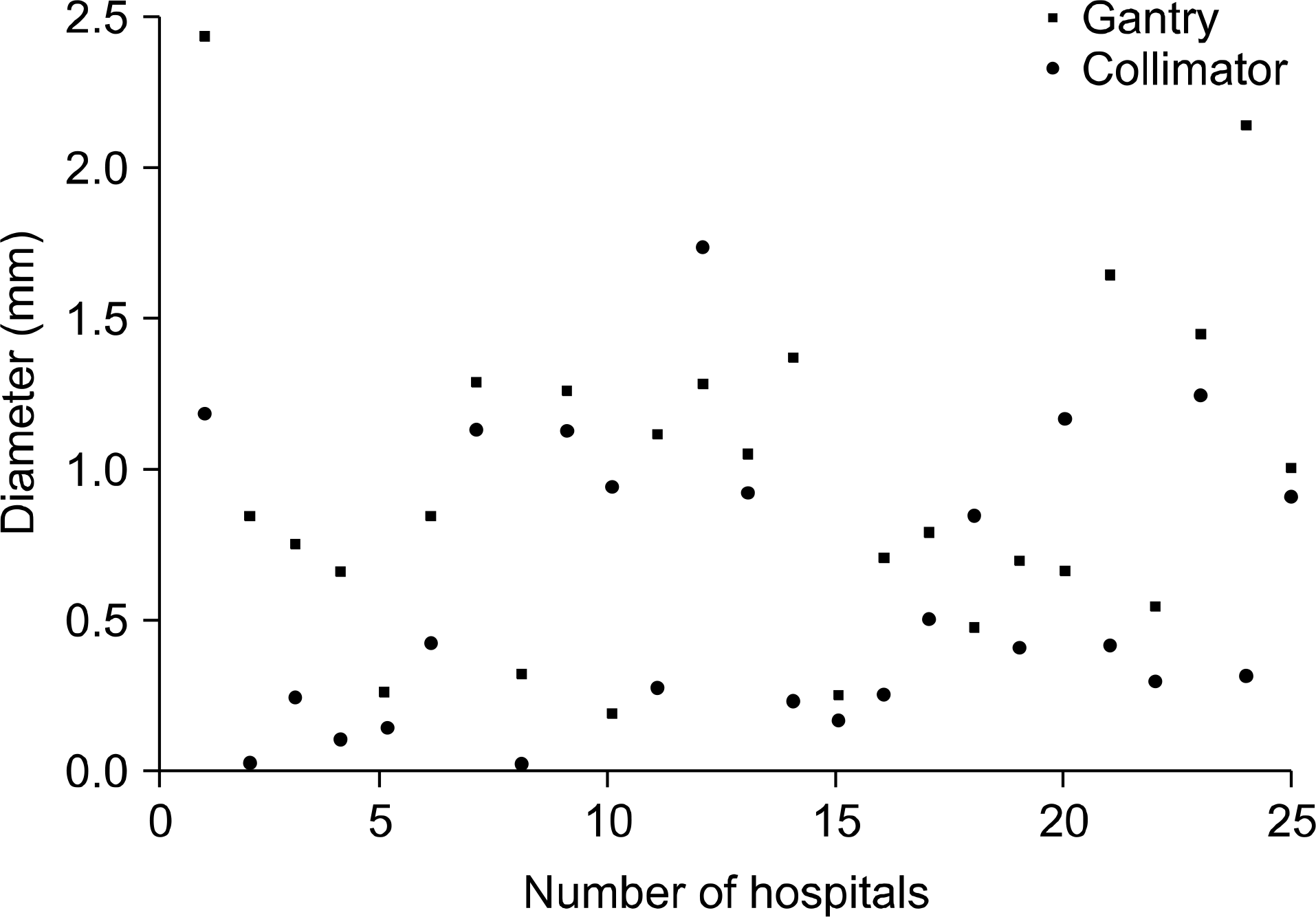
Table 1.
Areas of a participated hospitals for external audit.
| Areas | Number of participated hospitals | Number of Auditors |
|---|---|---|
| 서울 남부 | 3 | 2 |
| 서울 북부 | 5 | 2 |
| 경기, 인천 | 4 | 2 |
| 호남, 호서 | 5 | 2 |
| 대구, 경북 | 5 | 3 |
| 부산, 경남 | 3 | 2 |
| Total | 25 | 13 |
Table 2.
To be used dosimetries for external audit.




 PDF
PDF ePub
ePub Citation
Citation Print
Print


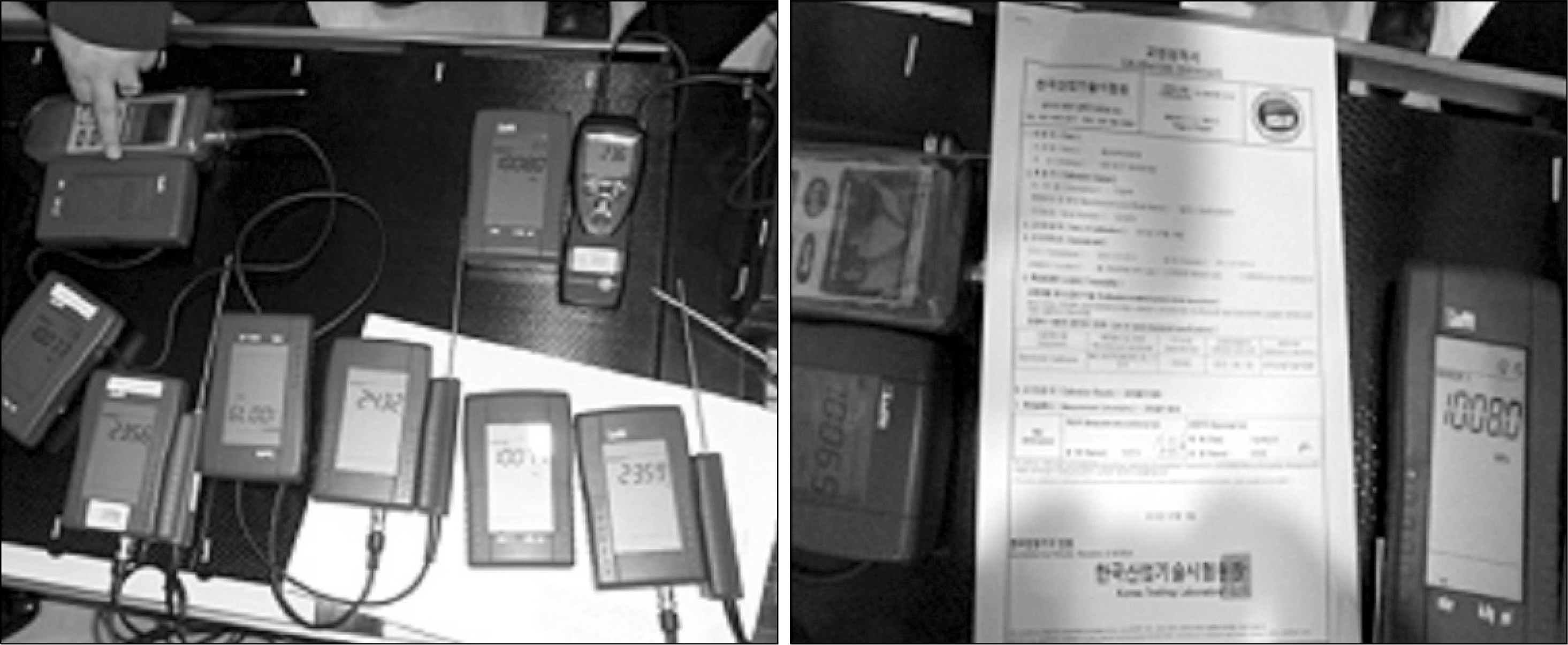
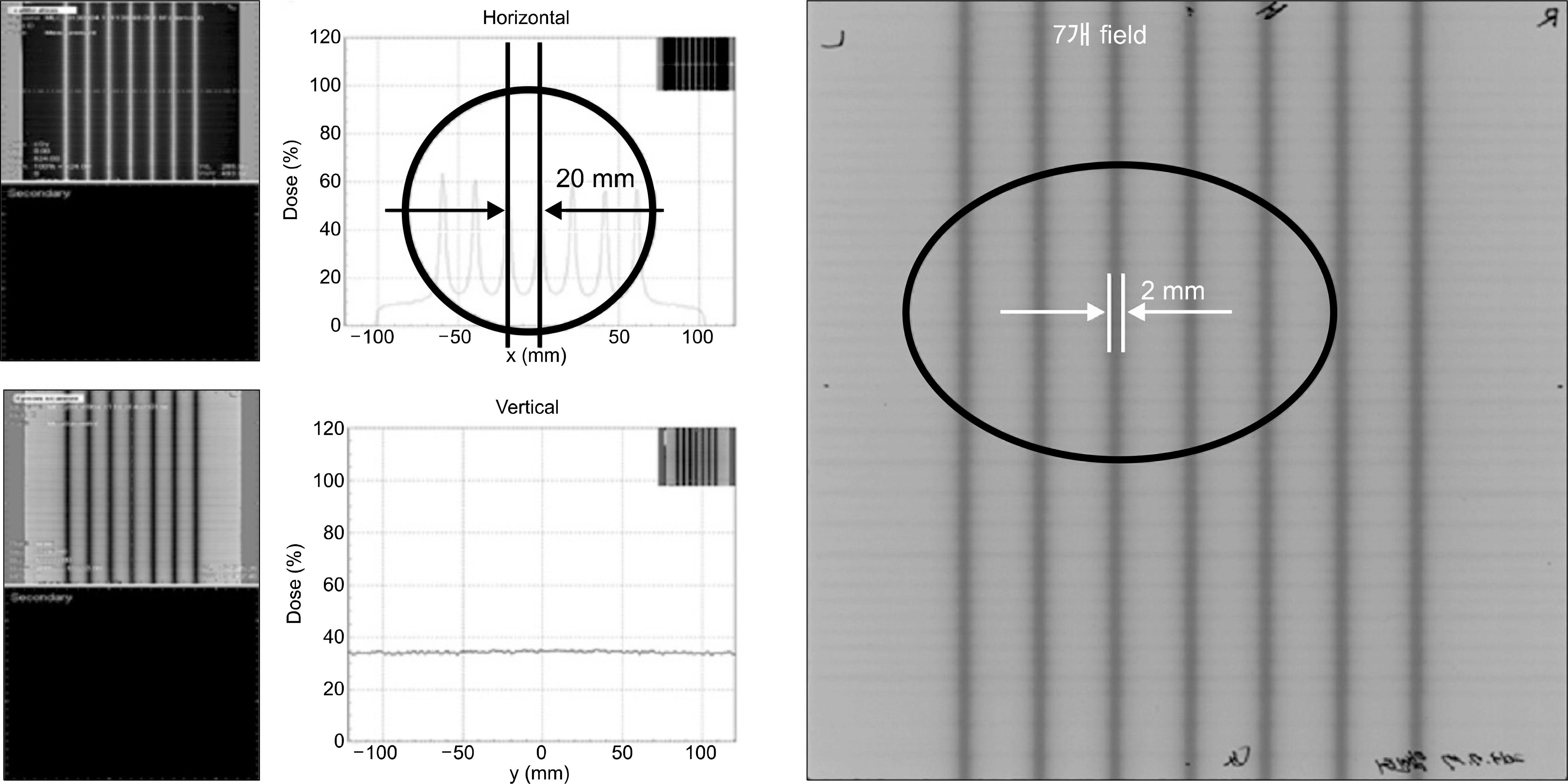
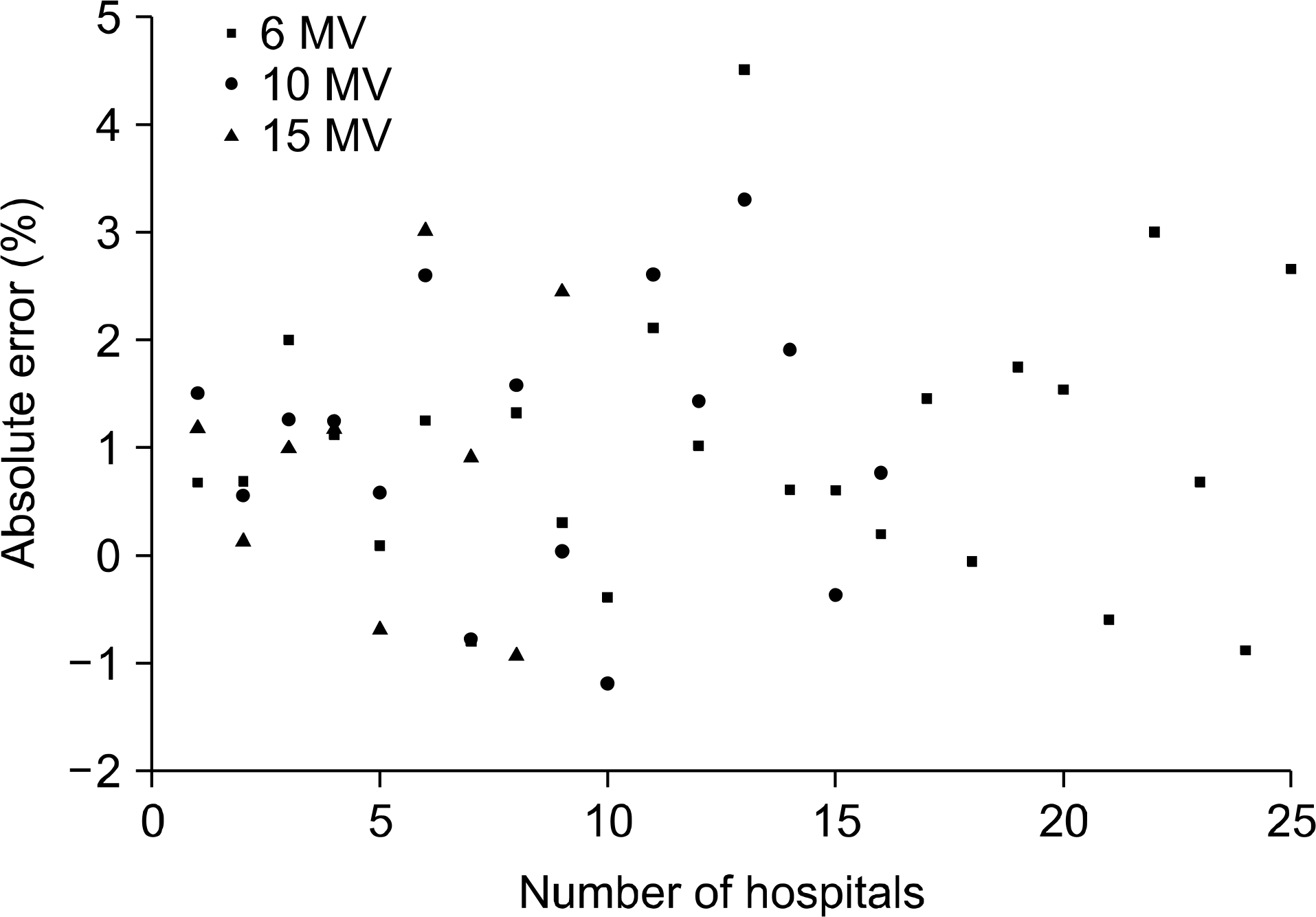
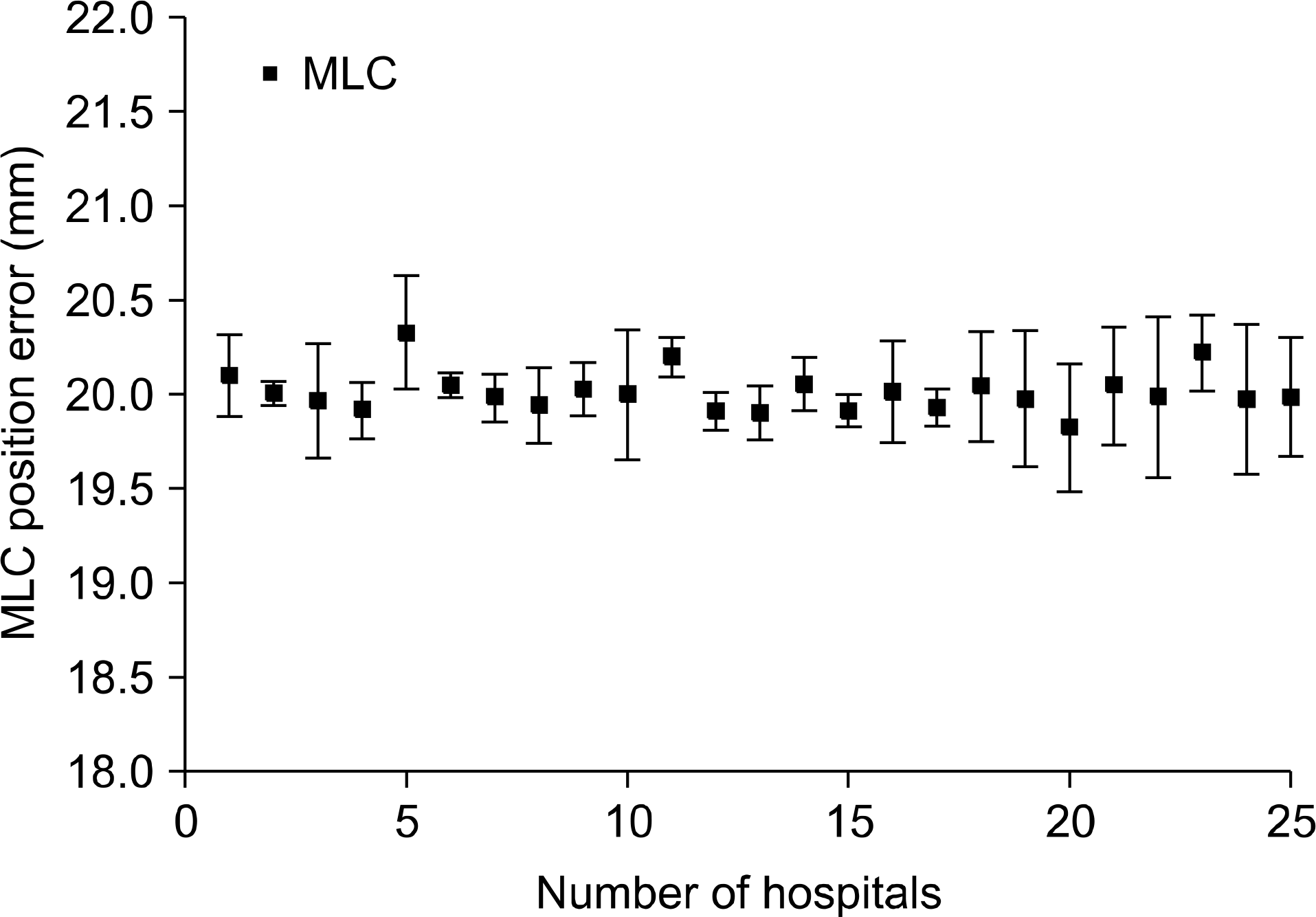
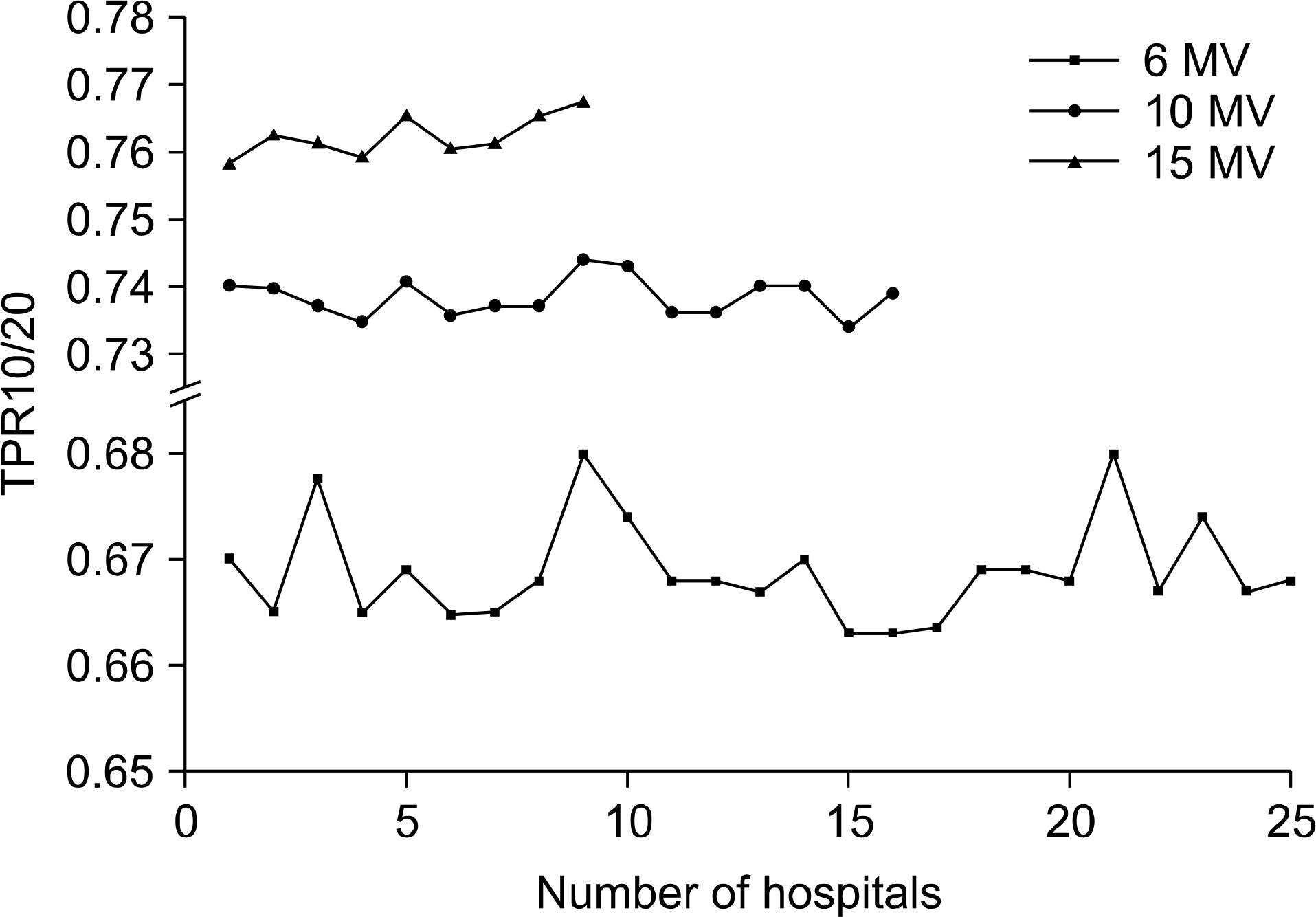
 XML Download
XML Download